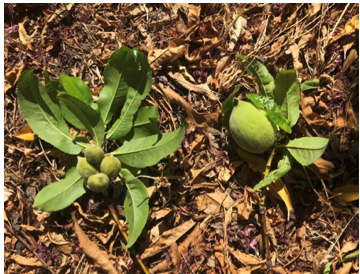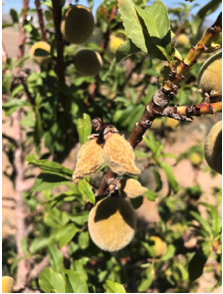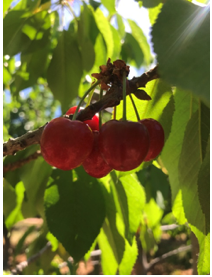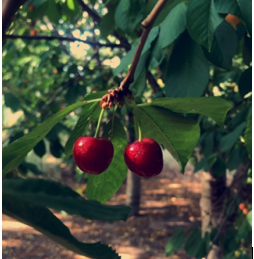June 2, 2018

Question:
Several branches on my peach tree are hanging lower and lower as the peaches get bigger. Is this OK or should I be thinning the fruit?
- Carol B., Los Lunas, NM
Answer:
On the one hand, you don’t want to thin your peach tree too soon and then lose the fruit you saved to a late frost or the dreaded hail storm. On the other hand, reducing the fruit load on heavily bearing branches has major benefits.

First of all, the branches you’re describing that are hanging lower as the peaches develop are in danger of breaking. If the weight of the fruit just bends the branch, a strong gust of wind can be the final straw. And “breaking” is a kind word. Often, it’s more of a terrible rip-like tear that can damage the main trunk irreparably.
Pruning back longer branches earlier in the year, ideally when the trees are still dormant, can help with overall structure and improve the tree’s ability to handle a larger fruit load without breaking. But here it is, practically summertime, and decisions need to be made now.
Sometimes longer branches hang so low they touch the ground before breaking. And I’ve seen people prop up laden limbs with make-shift crutches. However, brutal branch breakage isn’t the only reason for fruit tree thinning. By harvest time, each peach is a storage tank for the sugars (aka carbohydrates) that were produced in the leaves during photosynthesis. This process requires sufficient leaf surface area for enough sugars to be made to support each individual fruit and make it maximally sweet.
Have you heard that you should remove all fruit in the first years after planting to encourage healthy root establishment and better harvest in the future? [long sigh] Me too. The brutal truth is that photosynthesis is limited when your tree has very few leaves. When the canopy is small in the first few years or when the tree has been stressed and lost leaves, it makes sense to remove most or all of the fruit load so that the newly generated sugars can be spent on root establishment and stronger woody tissues rather than the fruit. The plus side is that developing healthy roots, trunk, and branches increases the chances of longevity and better yields in the years to come.

What about apple trees, cherries, apricots, or pears? The thinning strategies generally apply to all of them. Some species and cultivars produce clusters with more flowers than others, so there is some variation. Apple trees are especially known for heavy fruit set and the need for thinning. Research on apples has shown that optimal fruit size and yield is possible when the leaf-to-fruit ratio is approximately 30 leaves per apple, depending on the cultivar and associated leaf size. And cherries may not need thinning as much as other fruits. As fruits ripen, the benefits of thinning dwindle.
Depending on how far along your trees are by now in the season, you may already see that some of the smaller, damaged fruit are shriveled and fall easily when you barely touch them. That’s nature thinning the fruit for you, and it’s commonly called “June drop”—even if it happened in May. Moments after you finish reading this column, you’re going to generate your own “June drop” by selecting the smaller, damaged, uglier fruits in each cluster and twisting them gently but firmly until they fall off in your hands. It really is that simple. Drooping branches are the ones that need it the most and are easiest to reach, so go ahead and thin those right now. Check out this week’s blog post for 30-second demonstration videos.
In any tight fruit cluster, there’s an additional reason for thinning. The spot where two fruit press together often gets mushy and rotten, plus pests like to get in there and make a mess. Recommended spacing between thinned fruits varies, but a simple rule of thumb is to create a space 2–3 times the size of a mature fruit; that way they won’t touch. Rules of thumb are made to be broken, so set the spacing guideline aside when you see obviously damaged, puny runts.
Here’s one final tip for new growers: Ask friends to thin the fruit on your trees and offer to do the same for theirs because it can be emotionally debilitating to rip the tiny precious fruits from your own tree.

Marisa Y. Thompson, PhD, is the Extension Horticulture Specialist, in the Department of Extension Plant Sciences at the New Mexico State University Los Lunas Agricultural Science Center, email: desertblooms@nmsu.edu, office: 505-865-7340, ext. 113.
Links:
For more gardening information, visit the NMSU Extension Horticulture page at Desert Blooms and the NMSU Horticulture Publications page.
Send gardening questions to Southwest Yard and Garden - Attn: Dr. Marisa Thompson at desertblooms@nmsu.edu, or at the Desert Blooms Facebook page.
Please copy your County Extension Agent and indicate your county of residence when you submit your question!